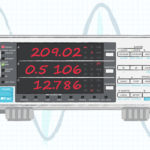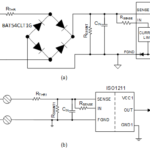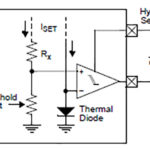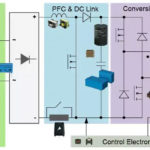Peer-to-peer, engineer-to-engineer questions and answers from the EDABoard.com engineering community around power electronics. Click the “Read more” link and follow the entire conversation and maybe add your two cents by logging in to EDAboard.com Driving induction motor using TRIAC – The induction motor is 230VAC. I have to drive a 230VAC induction motor in both directions […]
Industry Experts
Why is it vital to include power factor in ac-dc efficiency measurements?
Ron Stull of CUI explains what power factor is, how it affects efficiency calculations and how it is measured With today’s concentration on energy savings, design engineers need to know with increasing accuracy what their ac-dc power converter efficiency is. Measuring the ratio of output power to input power is simple for dc-dc converters, but […]
Why isolated digital inputs are replacing optocouplers in up to 300V systems
by Anant Kamath, Texas Instruments Isolation is a means of preventing DC and unwanted AC currents between two parts of a system while allowing signal and power transfer between those two parts. Isolated voltage detection is used in many industrial applications, including protection relays, power station automation, high-voltage battery management, telecom power supplies, home automation, […]
Power-supply noise, Part 2
Part 1 looked at the basics of noise, especially concerning power supplies. There are two noise sources which are not as obvious to many engineers as noise that results from the switching action of the power supply: differential mode noise and common-mode noise. These two noise modes have different causes and thus different solutions Q: […]
Power Electronics Top Talks in October on EDABoard.com forums
(editor’s note: Intrigued by the problem? Have a question or another solution? Then click the “Read more” link and follow the conversation on EDAboard.com or log in to EDAboard and participate in the power electronics forum threads.) Switch design by using solid devices – I want to know how to design a solid static switch to replace […]
Fuses for power protection, Part 2
Part 1 of this FAQ explained fuse basics. Although fuses are simple in principle, selecting the most suitable fuse for the application is more complicated than it may seem initially. Q: What are the key questions to ask when selecting a fuse? A: These are just a few of the considerations: What is the normal […]
Six considerations for better circuit protection
In an electronic system where the power source can be connected the wrong way round, protection should be considered to prevent damage to the circuitry. Most electronic circuits don’t like the power supply being reversed. However, there are other eventualities you could protect your circuit or system from temperature, humidity, excess current or excess loading, […]
A simple and inexpensive ideal-diode MOSFET circuit
by Crutschow When you parallel a battery with another battery or other source, the batteries are often required to be back charged. This can be done with standard diodes, but that gives close to a half volt drop — even with Schottky diodes. This is especially problematic with low-voltage batteries, where that drop is a […]
Choosing a reference voltage for an ADC
Analog-to-digital converters (ADCs) need a reference voltage (VREF) input in order to operate properly. ADCs convert analog inputs that can vary from zero volts on up to a maximum voltage level that is called the reference voltage. The reference voltage determines the ceiling of what the ADC can convert, and is essentially the yardstick against […]
Learning SMPS the hard way
By Syed Tahmid Mahbub, EDAboard.com forum member SMPS is the toughest section in power electronics. For this subject, you require additional knowledge for choosing the active and passive parts used in SMPS circuits. The special type of parts often required in power electronics (i.e. for low-frequency applications) may not be suitable in the case of […]











